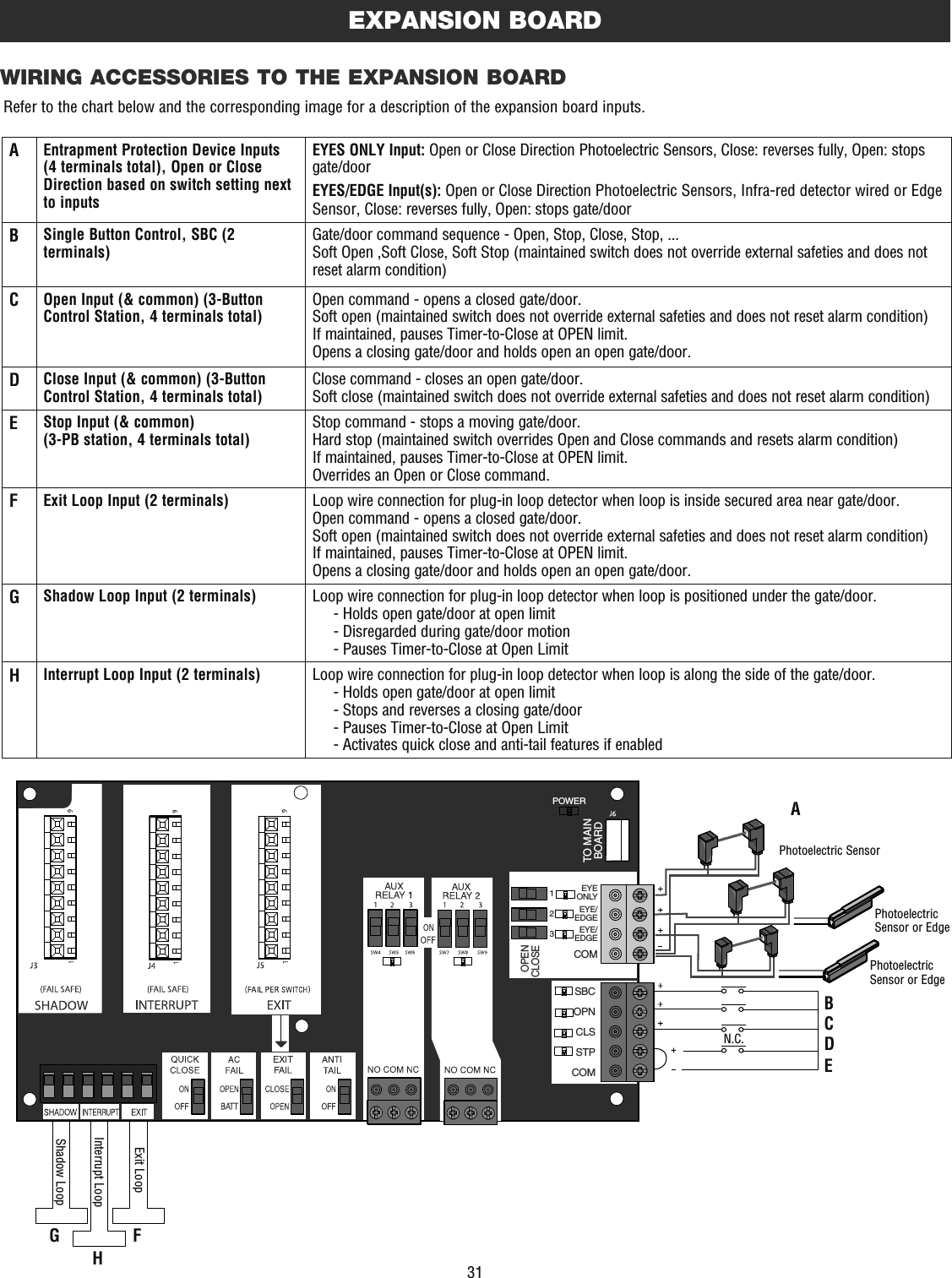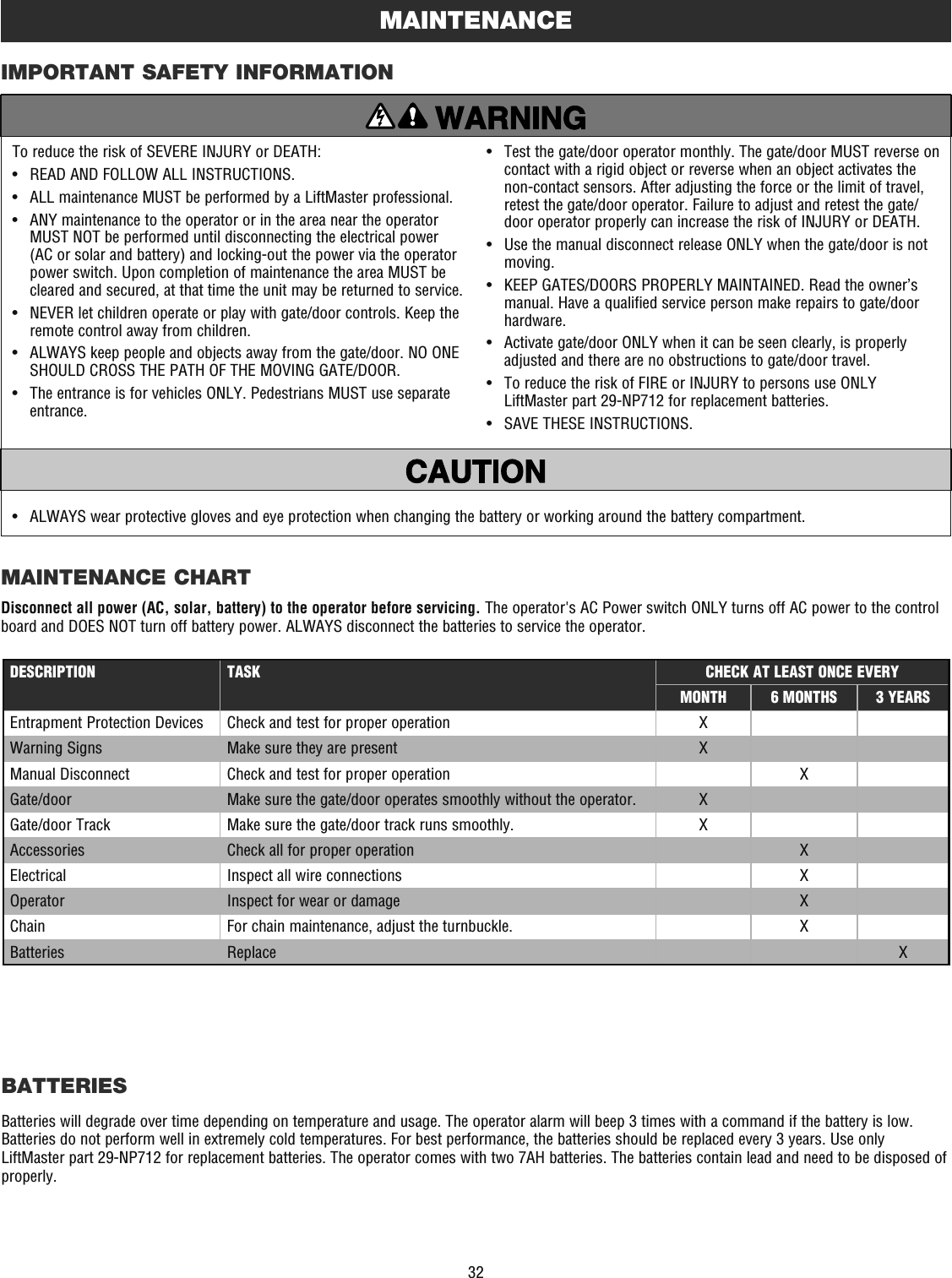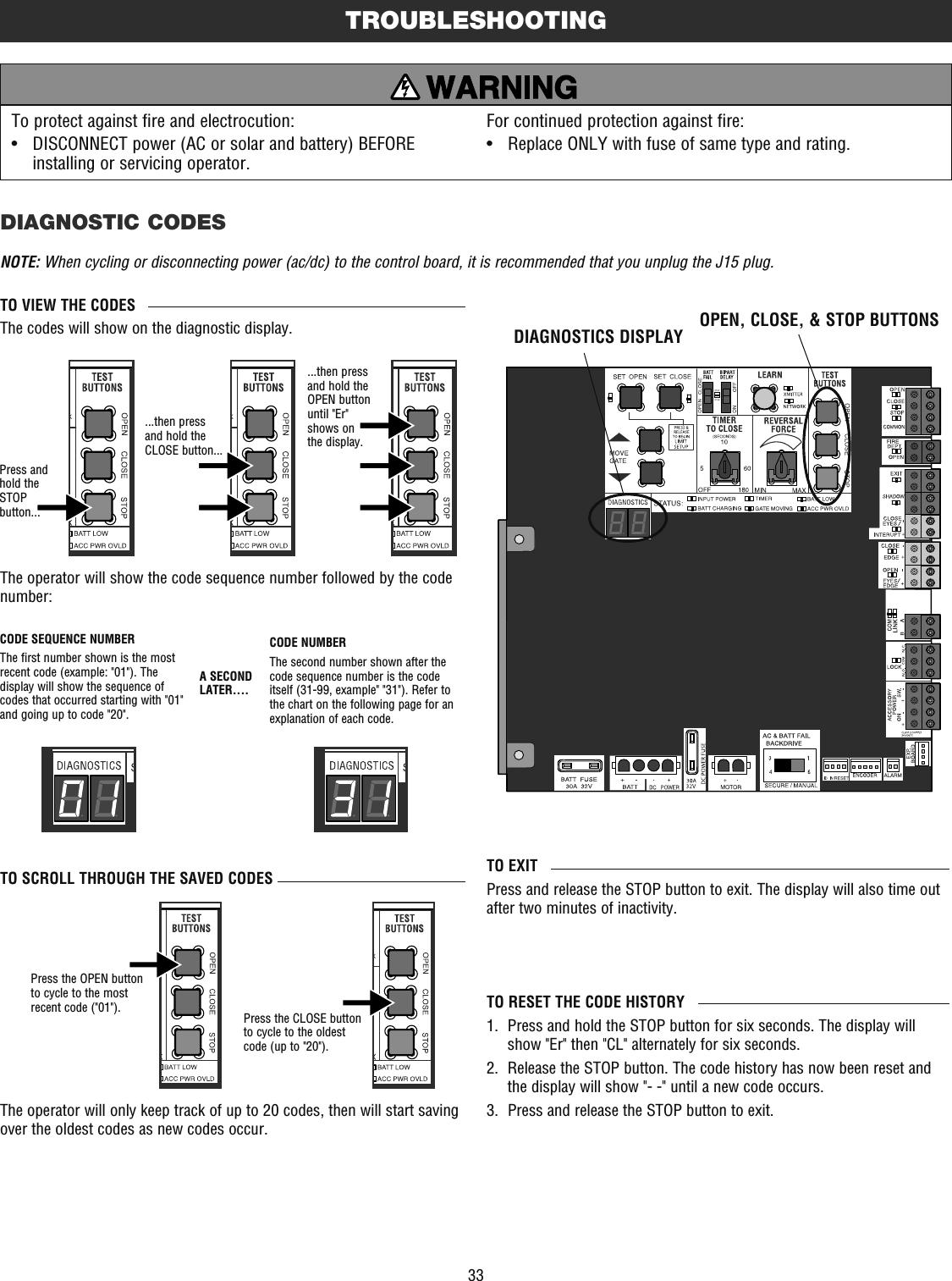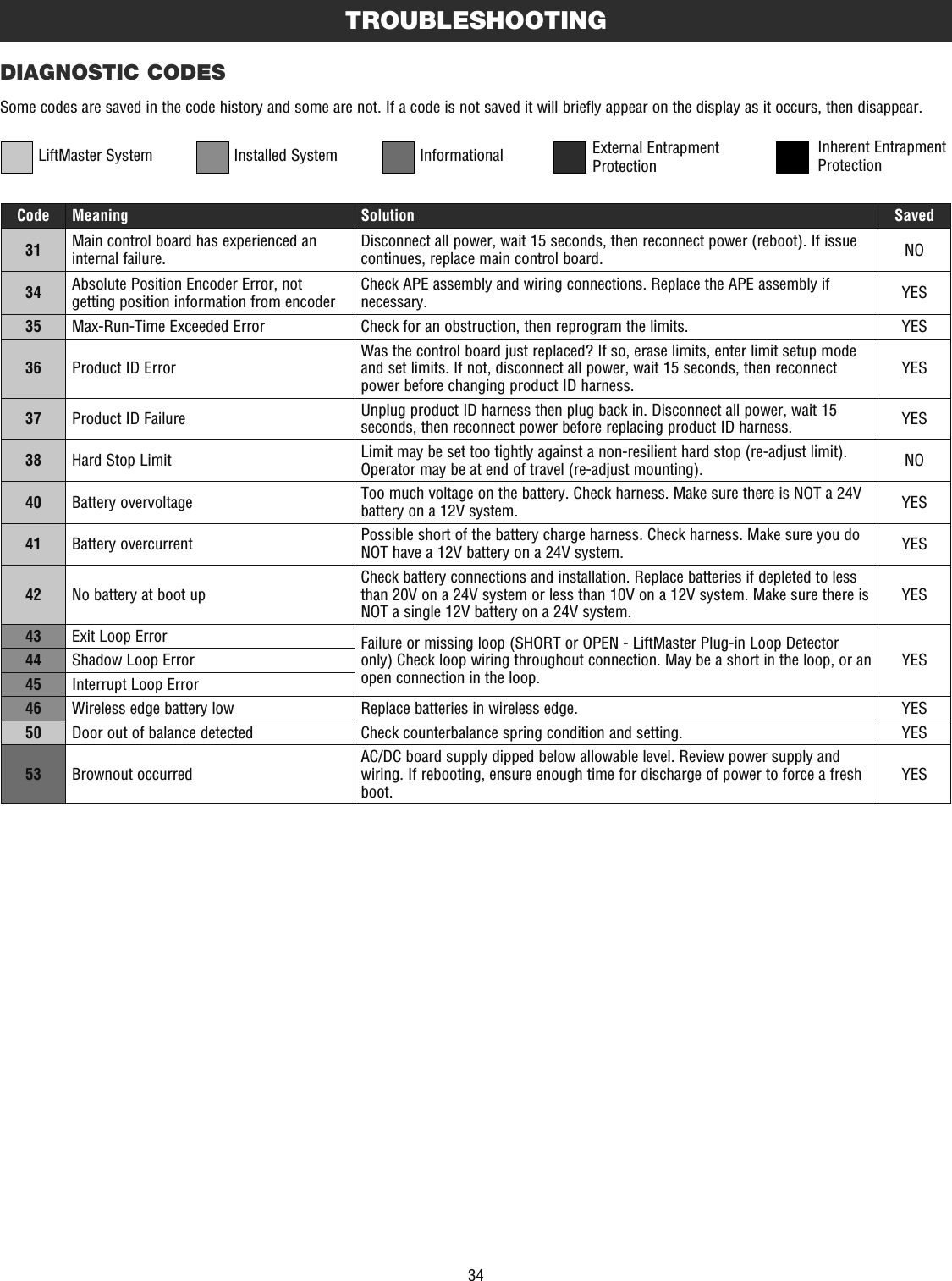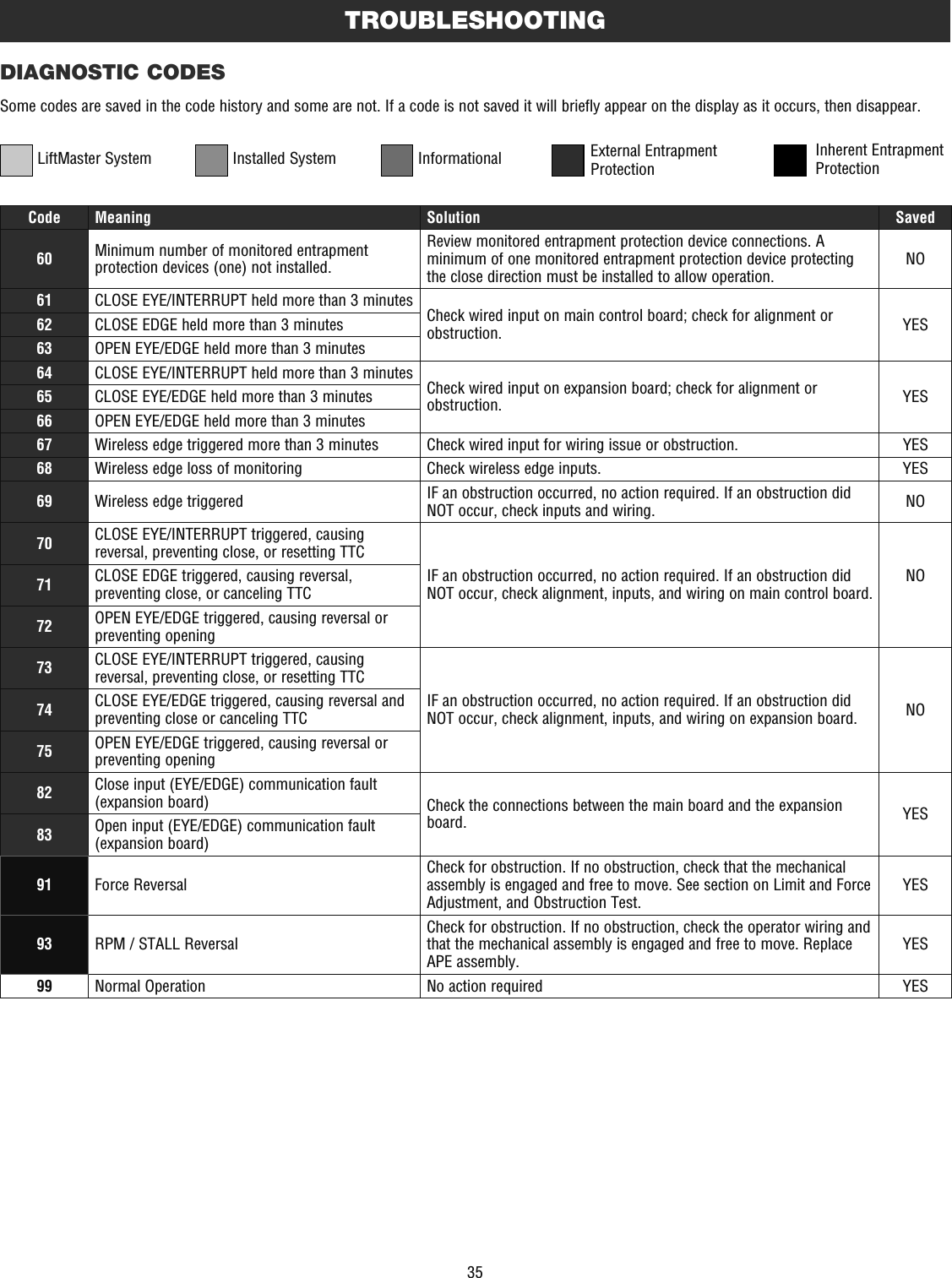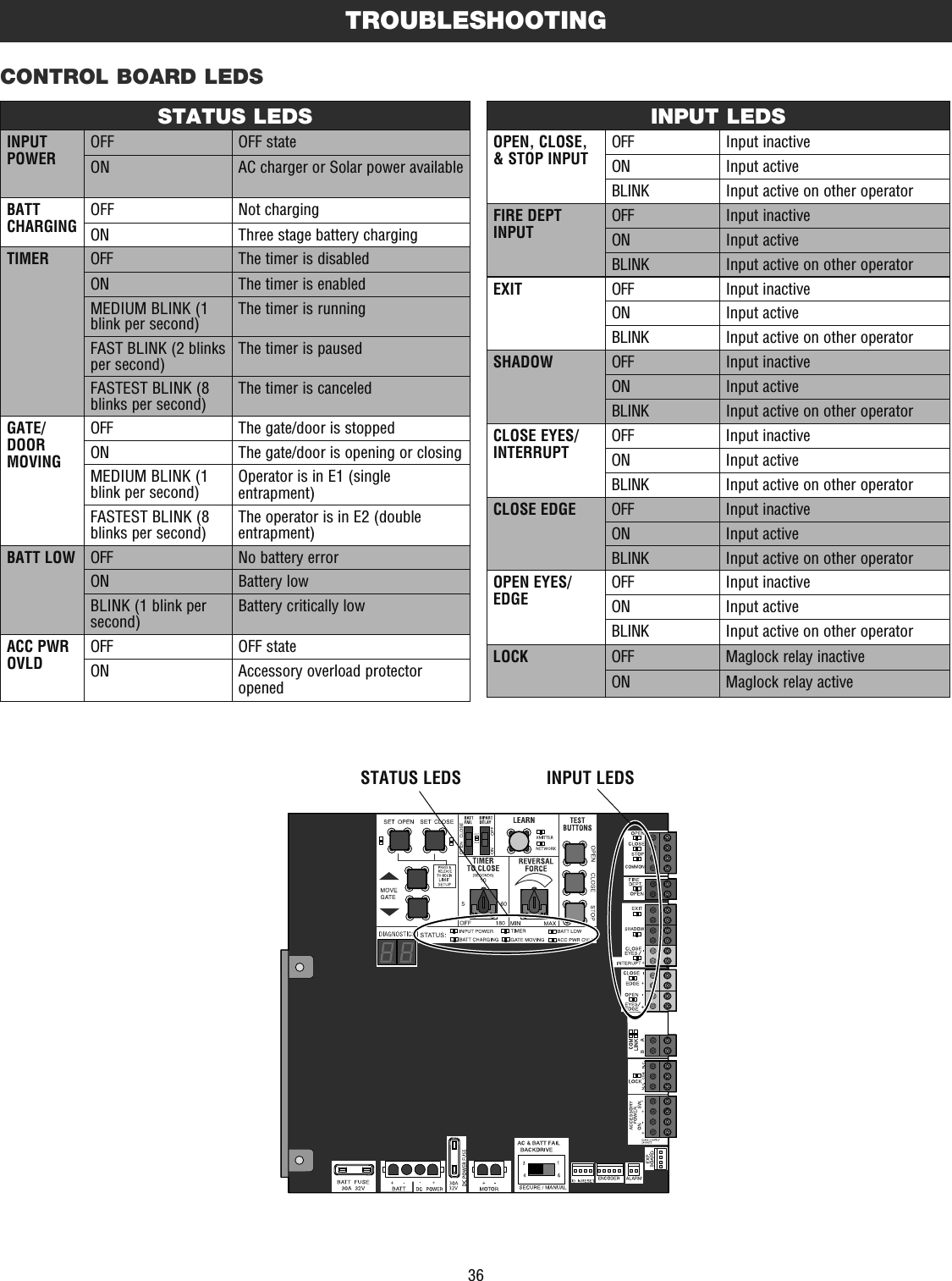Chamberlain Group The 8389 Overhead Door and Gate Operator User Manual 01 37718 indd
Chamberlain Group Inc, The Overhead Door and Gate Operator 01 37718 indd
Contents
- 1. User Manual_20160711_v1 - User Manual pt1 HCTDCU
- 2. User Manual_20160711_v1 - User Manual pt2 HCTDCU
- 3. User Manual_20160711_v1 - User Manual pt3 HCTDCU
- 4. User Manual_20160711_v1 - User Manual pt4 HCTDCU
- 5. User Manual_20160711_v1 - User Manual pt5 HCTDCU
- 6. User Manual_20160711_v1 - User Manual pt6 HCTDCU
- 7. User Manual_20160711_v1 - User Manual pt7 HCTDCU
- 8. User Manual_20160711_v1 - User Manual pt8 HCTDCU
User Manual_20160711_v1 - User Manual pt3 HCTDCU
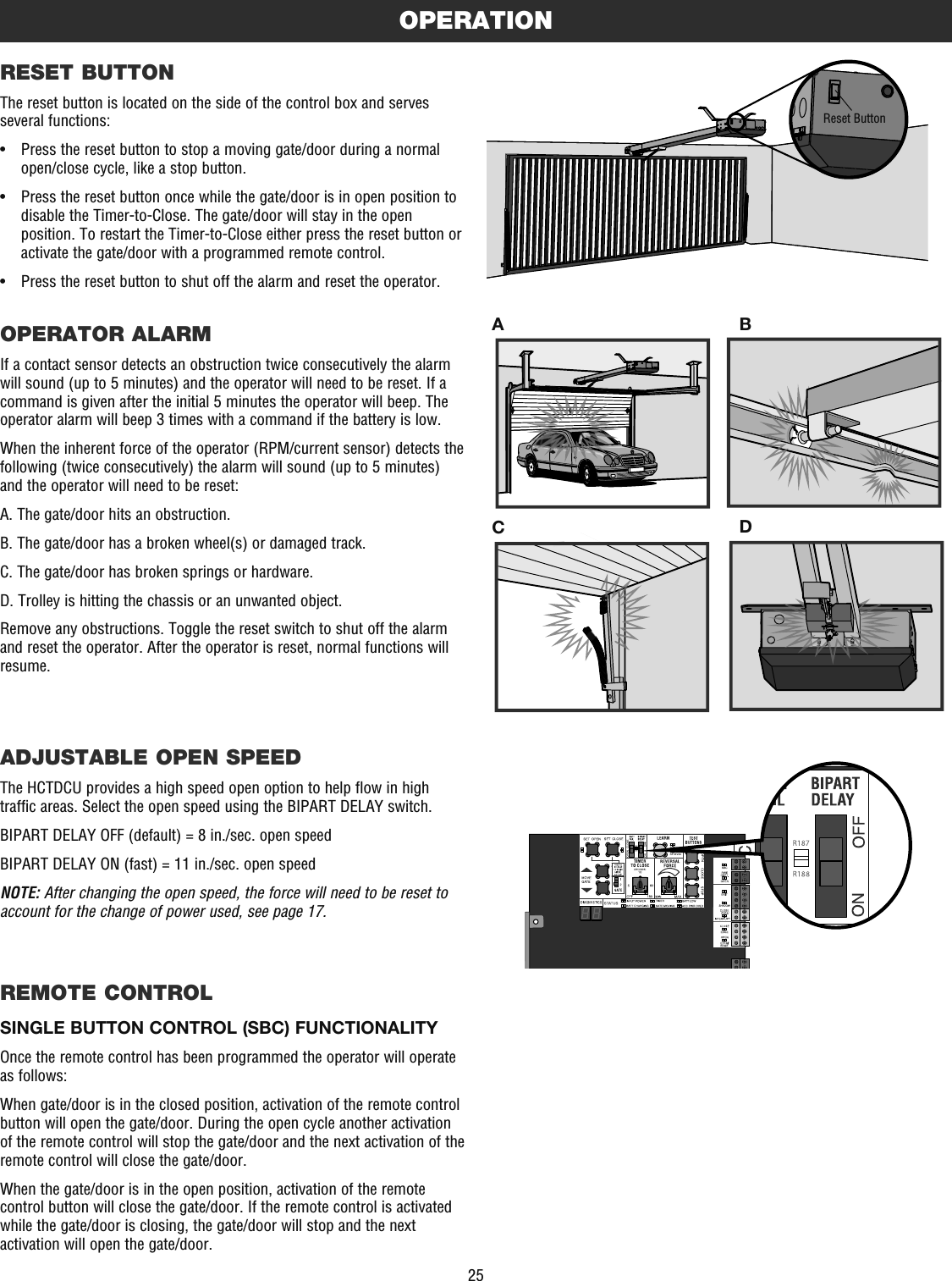
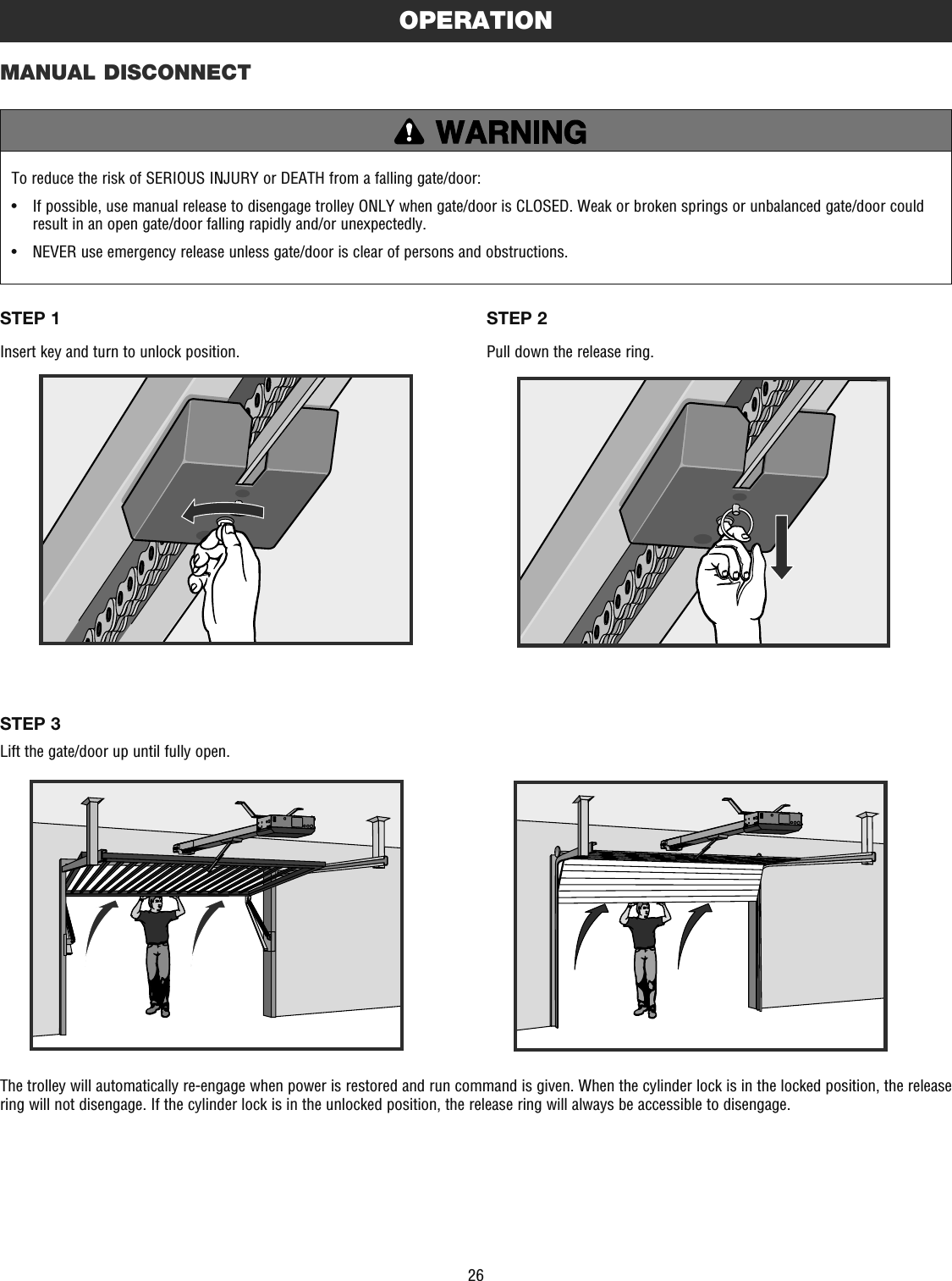
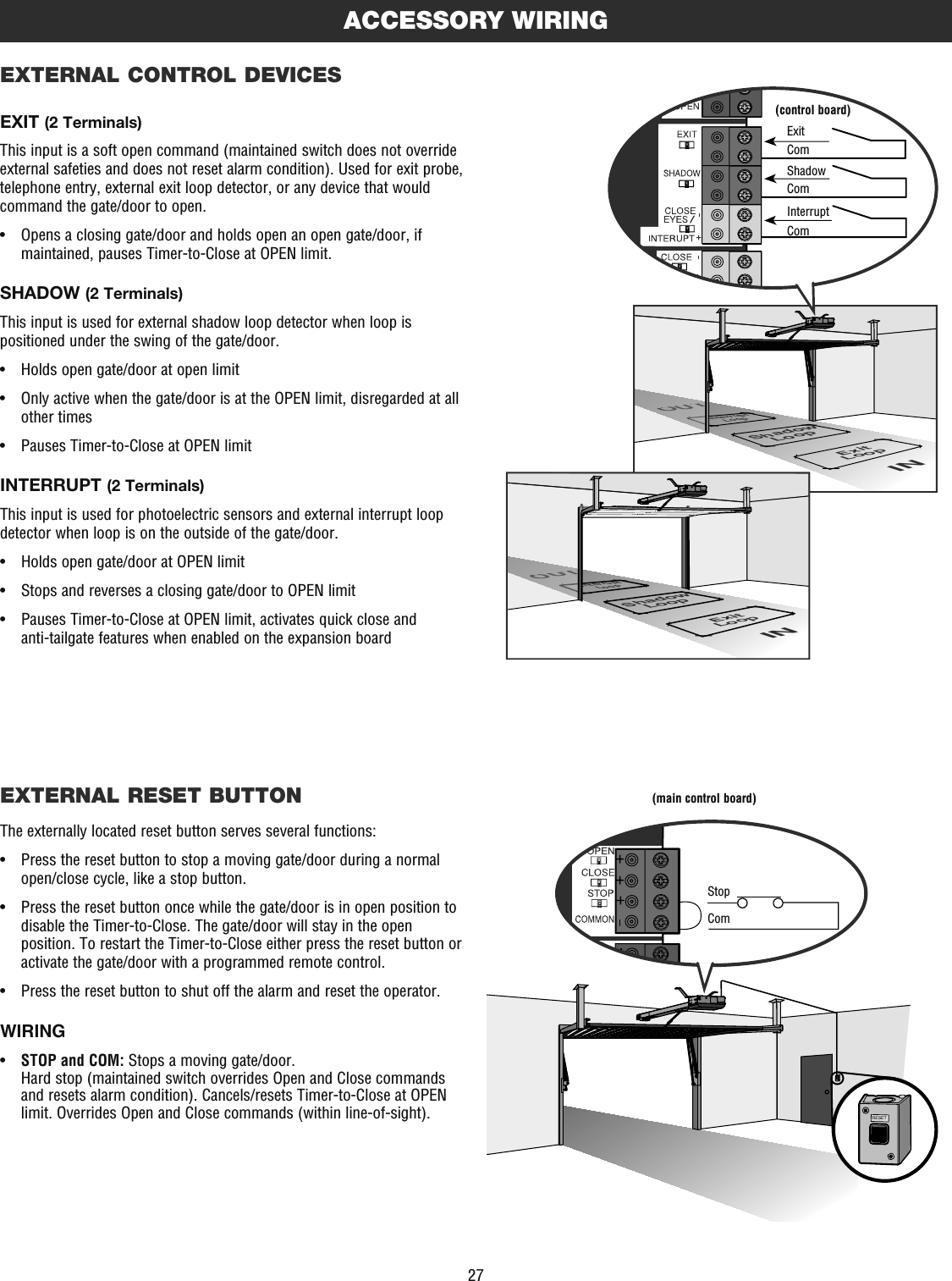
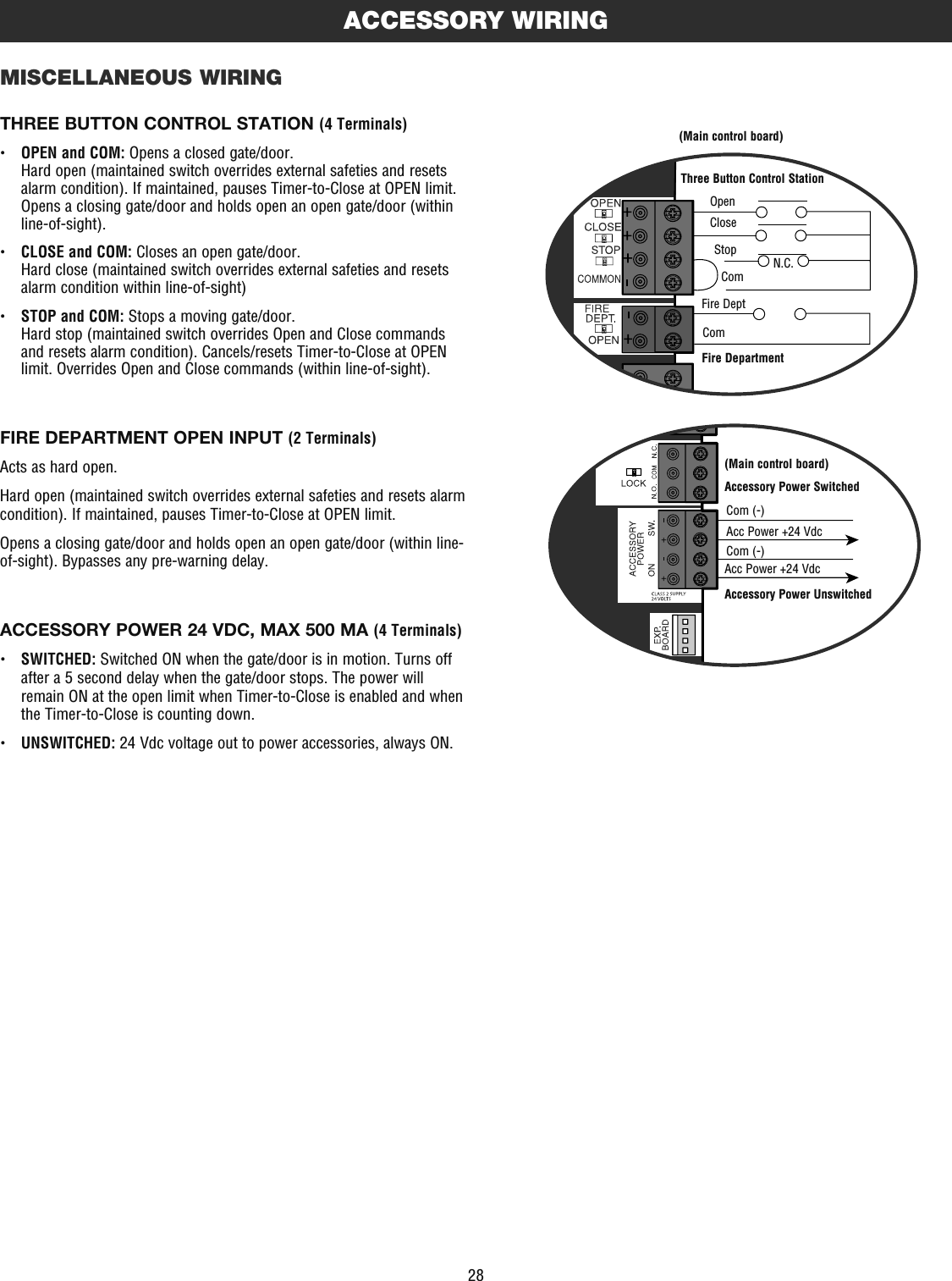
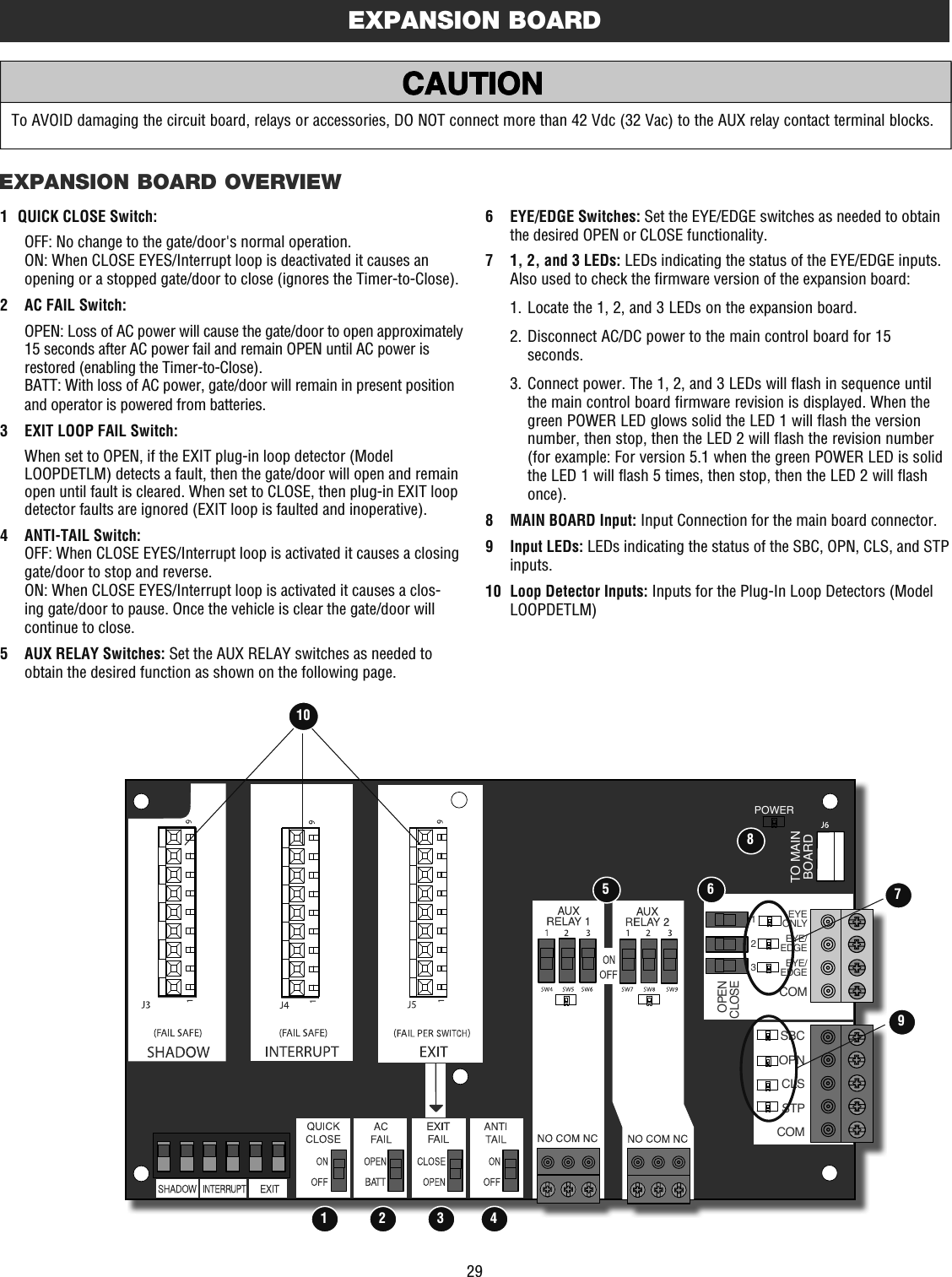
![30CYCLE COUNT* First, note the current Aux Relay switch positions. To determine the actual cycles that the gate/door operator has run (in thousands), set all three Aux Relay switches to the ON setting for Aux Relay 1. The Expansion Board’s 1, 2, and 3 LEDs will blink out the cycle count, with 1 LED blinking 1000’s, 2 LED blinking 10,000’s, 3 LED blinking 100,000’s, and simultaneously all three LED’s blink 1,000,000’s (e.g. 1 LED blinks 3 times, 2 LED blinks 6 times, and 3 LED blinks once. Cycle count is 163,000.). Cycle count displayed is between 1,000 and 9,999,000 cycles. After servicing, set Aux Relay switches back to their appropriate positions. Cycle count cannot be reset or changed. If under 1,000 cycles the 1, 2, and 3 LEDs will turn on for 10 seconds, then turn off.NOTE: The expansion board will flash the cycle count 3 times then all the LEDs will turn on solid for 10 seconds then turn off.EXPANSION BOARDAUX RELAY WIRING EXAMPLEAUXILIARY RELAYSAUX RELAY SETTING SWITCH SETTINGS AUX RELAY 1 AUX RELAY 2123Off (no feature selected) OFF OFF OFF Relay always off. Use this Aux Relay setting to conserve battery power.Open Limit Switch OFF OFF ON Energizes at open limit. Use with SAMS (Sequenced Access Management System, jointly with barrier gate).Close Limit Switch OFF ON OFF Energizes when not at close limit. For an additional audible or visual display, connect an external light (low voltage).Gate/door Motion OFF ON ON Energizes when motor is on (gate/door in motion). For an additional audible or visual display, connect an external buzzer or light (low voltage).Pre-Motion Delay ON OFF OFF Energizes 3 seconds before gate/door motion and remains energized during gate/door motion. The onboard alarm will sound. For an additional audible or visual display, connect an external buzzer or light (low voltage).Energizes 3 seconds before gate/door motion and remains energized during gate/door motion. For an additional audible or visual display, connect an external buzzer or light (low voltage).Power ON ON OFF Energizes when AC power or solar power is present. There is approximately a 10-12 second delay before relay cutoff, after AC shutdown. Energizes when on battery power. There is approximately a 10-12 second delay before relay cutoff, after AC shutdown.Tamper ON OFF ON Energizes if gate/door is manually tampered with by being pushed off of close limit. For an additional audible or visual display, connect an external buzzer or light (low voltage).Energizes if gate/door is manually tampered with by being pushed off of close limit. For an additional audible or visual display, connect an external buzzer or light (low voltage).Cycle Quantity Feedback* ON ON ON The 1, 2, and 3 LEDs will blink out the cycle count (cycle count is stored on the control board). See below. Red/green light functionality, see below.AUX RELAY 1 AND 2Normally Open (N.O.) and Normally Closed (N.C.) relay contacts to control external devices, for connection of Class 2, low voltage (42 Vdc [34 Vac] max 5 Amps) power sources only. Function of relay contact activation determined by switch settings.Aux RelayClass 2 Power Source (42 Vdc [34 Vac],5 A max)Warning LightCOMN.C.N.O.+_SHADOW INTERUPT EXITSBCOPNCLSSTPCOMEYEONLYEYE/EDGEEYE/EDGECOM123OPENCLOSETO MAINBOARDPOWER SHADOW INTERRUPT EXITAUX RELAY 1 AUX RELAY 2AUX Relay 2 N.C.ComAUX Relay 2 N.O.AUX Relay 1 N.C.ComAUX Relay 1 N.O.AUXILIARY RELAY WIRING EXAMPLERED/GREEN LIGHT FUNCTIONALITYRed light wired to AUX RELAY 1. Green light wired to AUX RELAY 2.Gate/door STATE AUX RELAY 1 SWITCHES AUX RELAY 2 SWITCHES1 OFF 2 OFF 3 OFF 1 ON 2 ON 3 ONClosed Red light OFF* Green light OFFOpening Red light ON/Flash Green light OFFOpen Red light OFF Green light ONClosing Red light ON/Flash Green light OFFDefined Mid Stop n/a n/aUndefined Mid Stop Red light ON Green light OFFTimer more than 5 seconds Red light OFF Green light ONTimer less than 5 seconds Red light ON/Flash Green light OFF* For red light ON when gate/door is closed, set switch 1 on AUX RELAY 1 to ON](https://usermanual.wiki/Chamberlain-Group-The/8389.User-Manual-20160711-v1-User-Manual-pt3-HCTDCU/User-Guide-3069945-Page-6.png)
